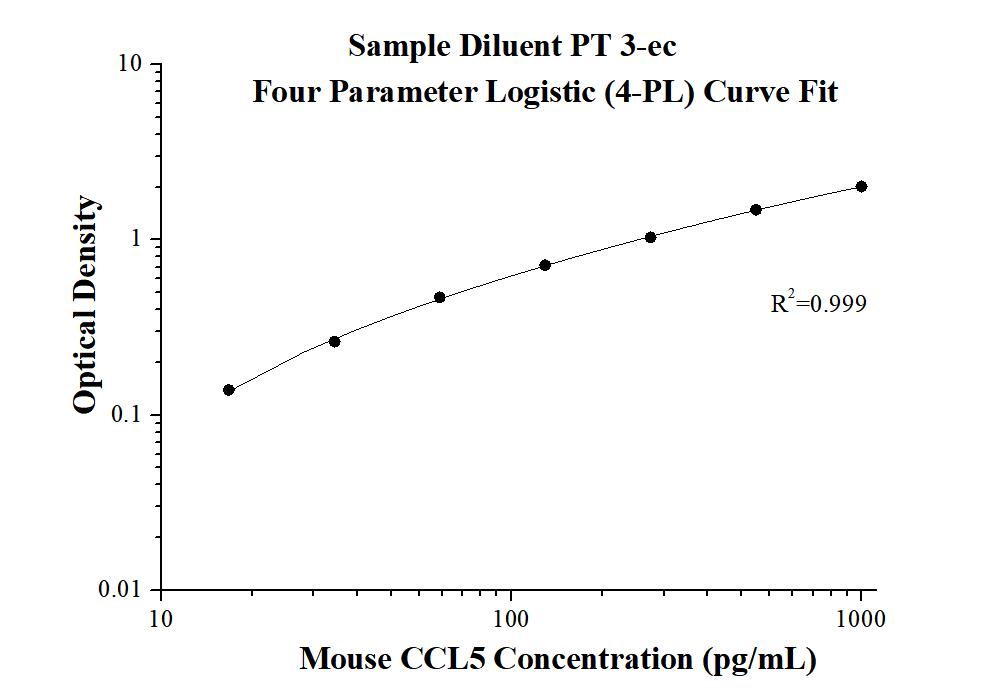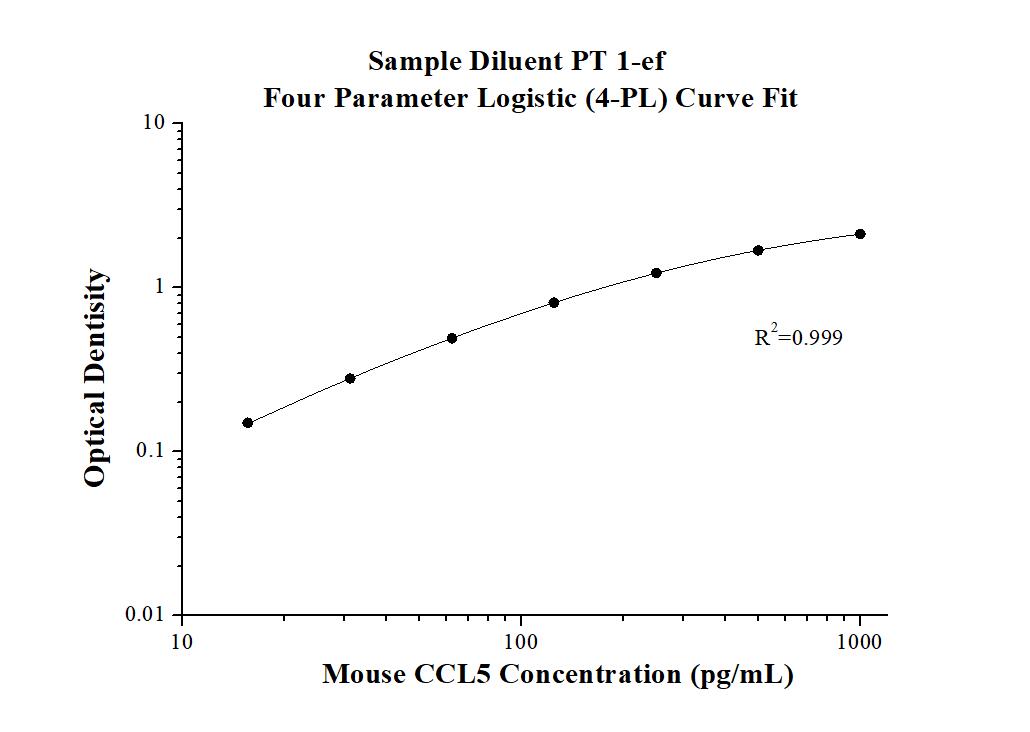Mouse CCL5 ELISA Kit
Cat no : KE10017
Synonyms
C-C motif chemokine 5, Ccl5, chemokine (C C motif) ligand 5, MuRantes, RANTES, Scya5, SISd, Small-inducible cytokine A5, TCP228
Validation Data Gallery
Product Information
KE10017 is a solid phase sandwich Enzyme Linked-Immuno-Sorbent Assay (Sandwich ELISA). The Mouse CCL5 ELISA kit is to be used to detect and quantify protein levels of endogenous mouse CCL5. The assay recognizes mouse CCL5. An antibody specific for mouse CCL5 has been pre-coated onto the microwells. The mouse CCL5 protein in samples is captured by the coated antibody after incubation. Following extensive washing, another antibody of biotinylated specific for mouse CCL5 is added to detect the captured mouse CCL5 protein. For signal development, Streptavidin-HRP is added, followed by Tetramethyl-benzidine (TMB) reagent. Solution containing sulfuric acid is used to stop color development and the color intensity which is proportional to the quantity of bound protein is measurable at 450 nm with the correction wavelength set at 630 nm.
| Product name | Mouse CCL5 ELISA Kit |
| Tests | 1 X 96 well plate |
| Sample type | Serum, Plasma, Cell culture supernatants |
| Assay type | Sandwich |
| Sensitivity | 5.7 pg/mL |
| Range | 15.6-1000 pg/mL |
| Reactivity | Mouse |
| Tested applications | Sandwich ELISA |
| Gene ID (NCBI) | 20304 |
Recovery
| Sample Type | Average | Range |
|---|---|---|
| Mouse serum | 87% | 74%-124% |
| Cell culture supernatants | 106% | 83%-121% |
IntraAssay
| Sample | n | mean ( pg/mL) | SD | CV% |
|---|---|---|---|---|
| 1 | 20 | 41.4 | 2.4 | 5.8 |
| 2 | 20 | 162.0 | 5.2 | 3.2 |
| 3 | 20 | 523.0 | 49.2 | 9.3 |
InterAssay
| Sample | n | mean ( pg/mL) | SD | CV% |
|---|---|---|---|---|
| 1 | 24 | 55.8 | 5.3 | 9.5 |
| 2 | 24 | 259.1 | 23.8 | 9.2 |
| 3 | 24 | 905.6 | 58.1 | 6.4 |
Background Information
CCL5, also known as RANTES, belongs to the CC chemokine family. It is strongly expressed in the human and murine liver upon injury. CCL5 has been found to be produced by numerous cell types, including platelets, macrophages, endothelial, and stellate cells. CCL5 recruits T cells, dendritic cells, eosinophils, NK cells, mast cells, and basophils to sites of inflammation by interacting with 3 specific G protein-coupled receptors: CCR1, CCR3, and CCR5. While CCL5 may promote efficient anti-tumour immune responses, it has also been associated with cancer progression and metastasis.
Properties
| Storage Instructions | All the reagents are stored at 2-8℃ for 6 months or -20℃ for 12 months. Refer to the protocol for further storage instructions. |
| Synonyms | C-C motif chemokine 5, Ccl5, chemokine (C C motif) ligand 5, MuRantes, RANTES, Scya5, SISd, Small-inducible cytokine A5, TCP228 |
Publications
| Species | Sample Type | Title |
|---|---|---|
Bone Res Osteopontin deficiency promotes cartilaginous endplate degeneration by enhancing the NF-κB signaling to recruit macrophages and activate the NLRP3 inflammasome | ||
Clin Cancer Res Targeting Dendritic Cell Dysfunction to Circumvent Anti-PD1 Resistance in Head and Neck Cancer | ||
FEBS J Deficiency of p38α in macrophage ameliorates d-galactosamine/TNF-α-induced acute liver injury in mice. | ||
Eur J Med Res GM-CSF-mediated inducement of bone marrow MDSCs by TSA and effect on survival of graft in mice | ||
J Neuroinflammation H3K27me3 of Rnf19a promotes neuroinflammatory response during Japanese encephalitis virus infection | ||
Cancer Lett Nanosecond pulsed electric field stimulates CD103+ DC accumulation in tumor microenvironment via NK-CD103+ DC crosstalk |

